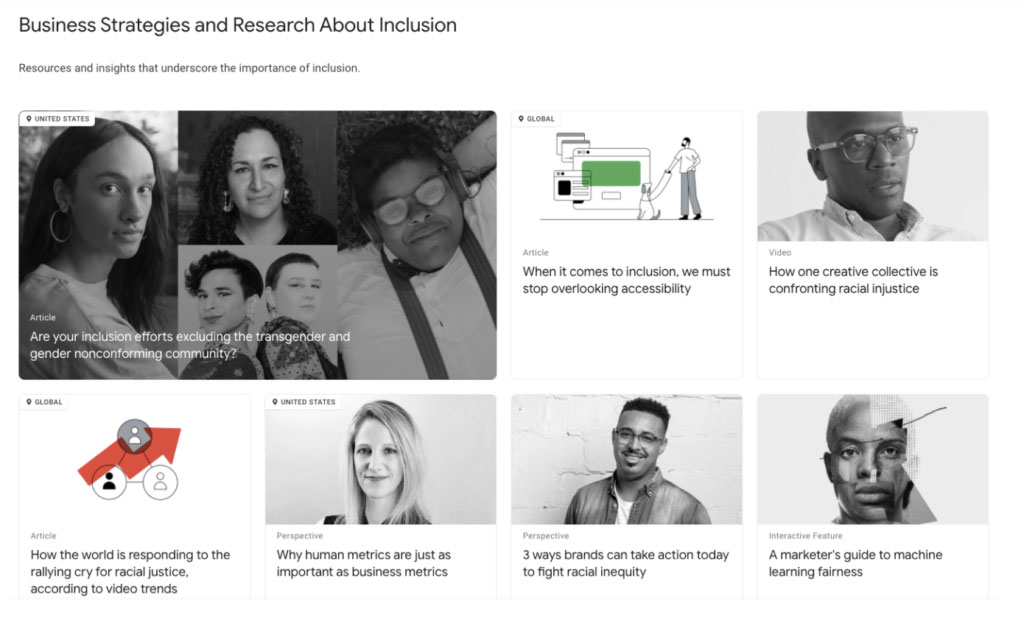Bring Your Brand’s Content Up to Speed with How People Think, Learn, and Digest Information in a Digital World
It’s time to modernize your content.
After all, we update all the time – our homes, our wardrobes, our cars…and the same motivations that compel us to buy the latest iPhone as soon as it comes out should also apply to your brand’s content strategy.
In a Content Marketing Institute article about 2021 content planning, Marcus Collins, a marketing professor at the University of Michigan Ross School of Business put it best:
“No one’s like, ‘Yes! White papers – love them!’ No one goes to the movies (pre-COVID) and says, ‘Man, Christopher Nolan gave us some great content,’ or ‘Drake just dropped some really dope content.’ No one says that. People say, ‘It was a great album.’ ‘It was a great movie.’”
In that article, Collins goes on to say that marketers should think more about people-first, experiential, humanizing content – and we couldn’t agree more. The way marketers tend to talk about and produce content is often vastly different from the way real people talk about and digest content, and it’s time to change that.
To Modernize Your Content, Find the Weak Areas of Your content Strategy First
Before we get into the modernization of your content itself, we have to stress the importance of starting with your content strategy – that is, making sure it, too, has evolved along with technology and marketing practices. Take a look under the hood and see if your content strategy checks these boxes:
- You understand your target audience and what your competitors are doing so you can be sure your content not only meets your customers’ needs but helps you stand out and advance in your market.
- You take advantage of technology like content management tools, chatbots, and marketing platforms, to name just a few, to help you better connect with your audience and nurture those relationships through conversion.
- You produce new content regularly – not just a handful of blog posts each year
- Your content is up-to-date and older, less relevant content is archived or updated – and your content supports your customers’ buyer journeys (conducting a content audit is a great way to assess how effective your content is at bringing prospects through the funnel to conversion).
- You’re active on multiple digital platforms, giving you multiple ways to showcase your content and get found online.
- Your content is regularly optimized for search, and your website and assets are mobile-friendly.
If you don’t have any or most of these areas already accounted for, you know where you need to start to modernize your content strategy.
As you’re making these changes, we have some recommendations to modernize the content itself.
What’s in a Name? Modernize Your Content Categories
The easiest place to begin to modernize your content is to look at how it is categorized. Do you have a library of resources on your website in which one of the categories to search within is “white papers” and another is, perhaps, “presentations” or something similarly vague?
As Marcus Collins said, your audience is not going to say, “Yes! White papers!” and hungrily delve into the entire collection to find the specific information they’re looking for. They are better served by clearly-defined categories that directly reflect your services or offerings, and that make it as easy as possible for users to find the information they want.
This type of approach to your resources also allows you to keep the featured content fresh and relevant – your audience wants to see the COVID-19 story right now, not a dated marketing trend about live events.
Make Your Content Sound Like it Comes From Present Day
I know it seems like I keep knocking white papers. In actuality, they are a valuable resource – for specific audiences who want to get into greater detail about a complicated topic. White papers and in-depth research articles help companies showcase deeper knowledge about and thought leadership in their market category.
We encourage our clients to weave white papers into their content strategy if it makes sense for their audience. I can’t stress enough that while you may love a good 5-page deep-dive, your customers might not.
A dominating byproduct of this digital world we’re living in is that the way people digest information has drastically changed. This reality is nothing new – in most cases we want things fast, easy-to-consume, visual, and brief. Only a narrow swath of target customers will sit down to read a lengthy report top-to-bottom.
Modernize your content by making it look and sound more applicable to where we are right now. A great example of this approach is Think with Google, a content hub of insights and ideas organized (appropriately) to fit the way we think.

These assets are labeled “Perspective”, “Interactive Feature”, “Video” and “Case Study”, which are more representative of the digital language we speak today. And the labels are included as something of an afterthought to set expectations – the asset titles, which are prominently displayed, are what get people to click.
Really the big takeaway here is to create and present content that resonates with your target audience today. Tracking content performance is a great way to know what works – if your infographics get a lot of traffic and your eBooks get far less, shift more emphasis to infographic creation.
And rather than ditch eBook creation entirely, think of ways to make them more visual – and modernize the name. Some eyes may glaze over at the word “eBook” while something like a “LookBook” sounds more compelling.
If you modernize your content strategy with the right technology, promotion tactics, buyer journey focus, and SEO approach, you have the ability to focus on modernizing the content itself. Engage your audience by presenting content in a format that makes sense for how they consume information in today’s digital world.


